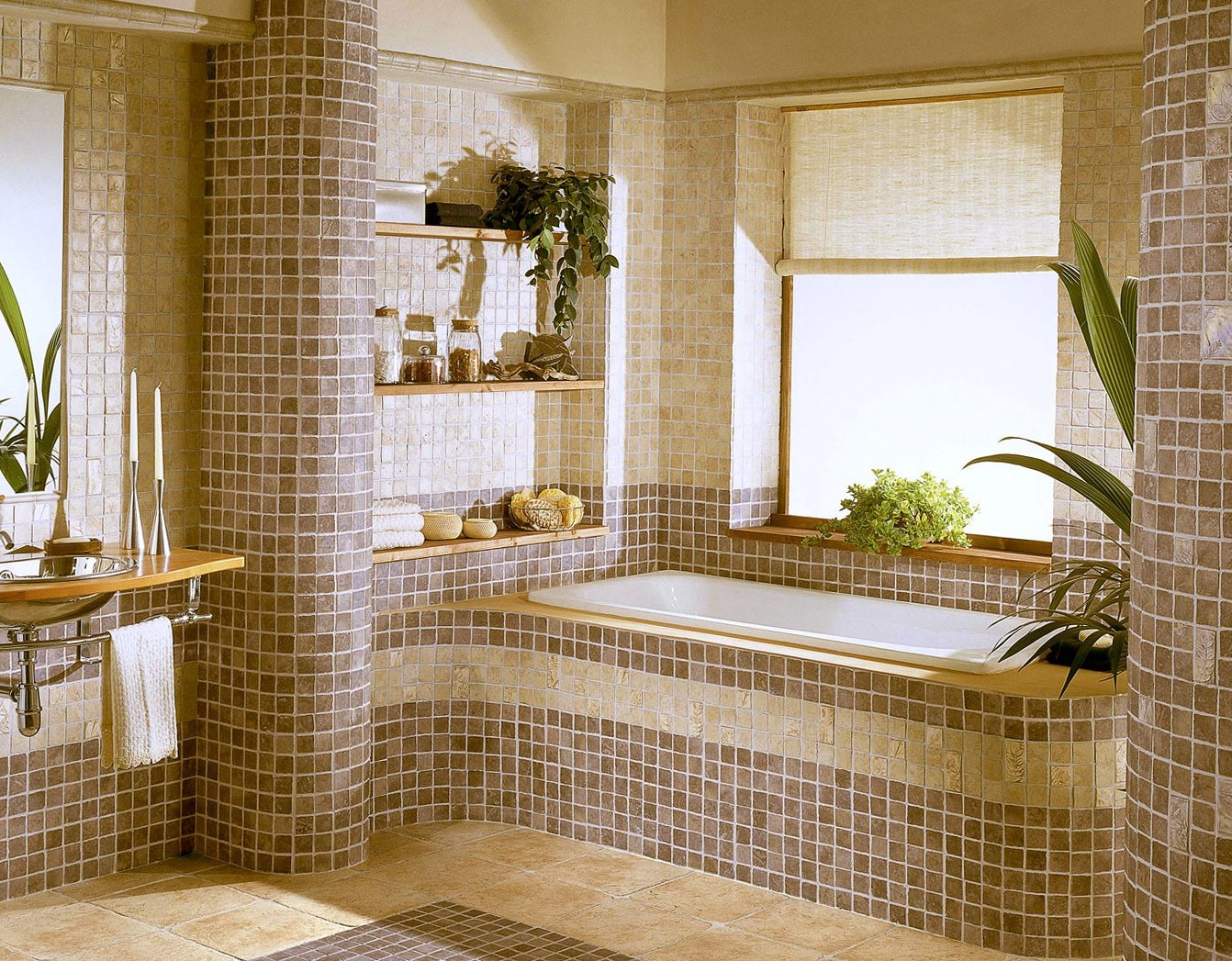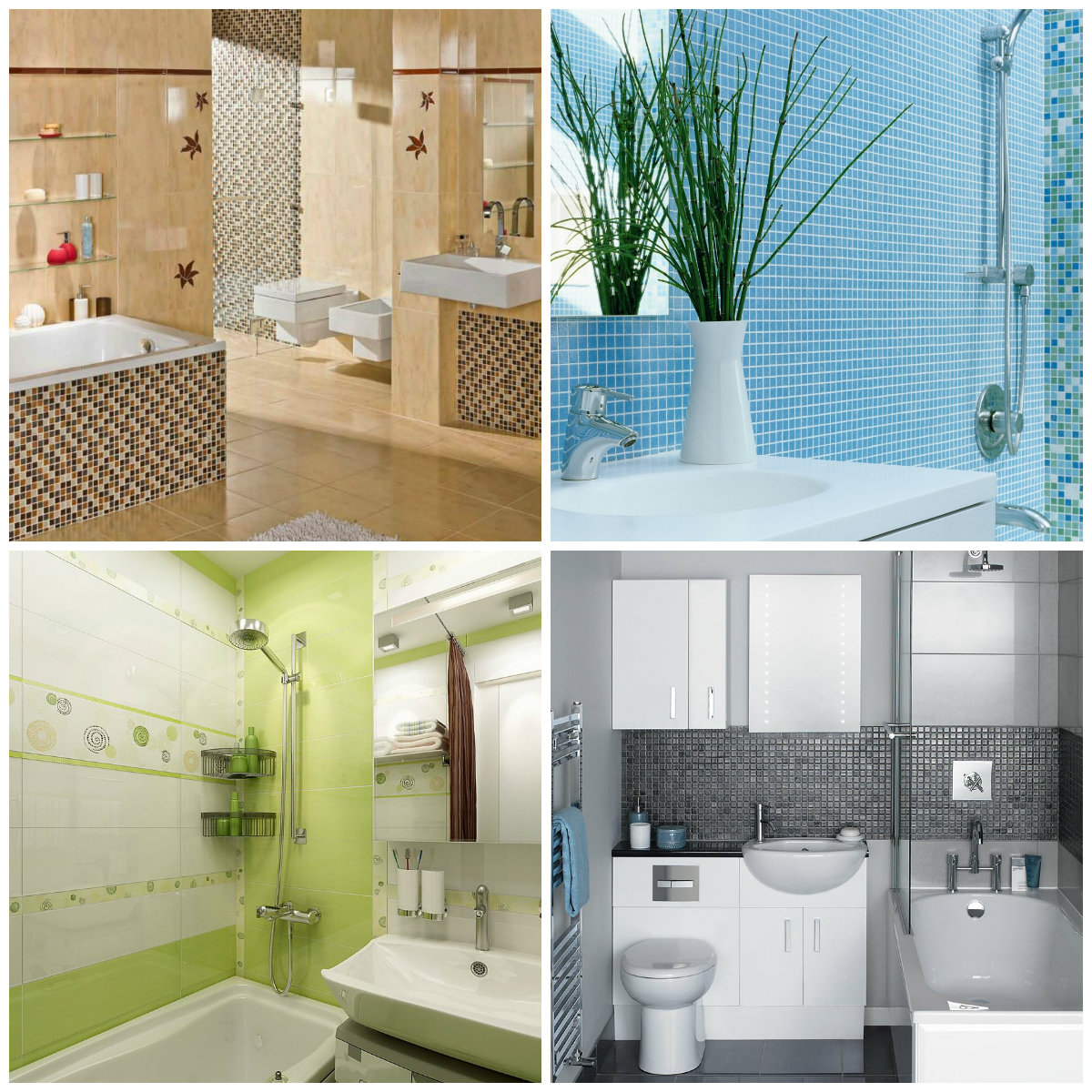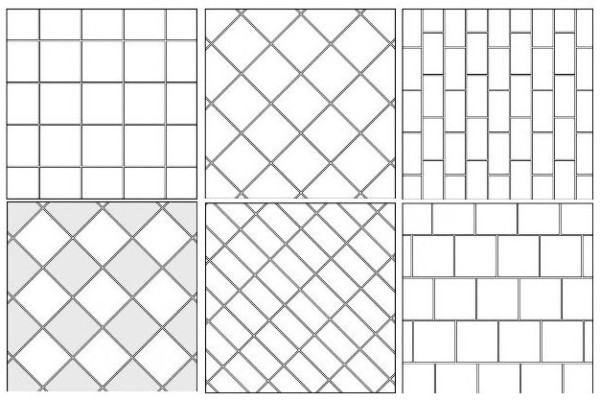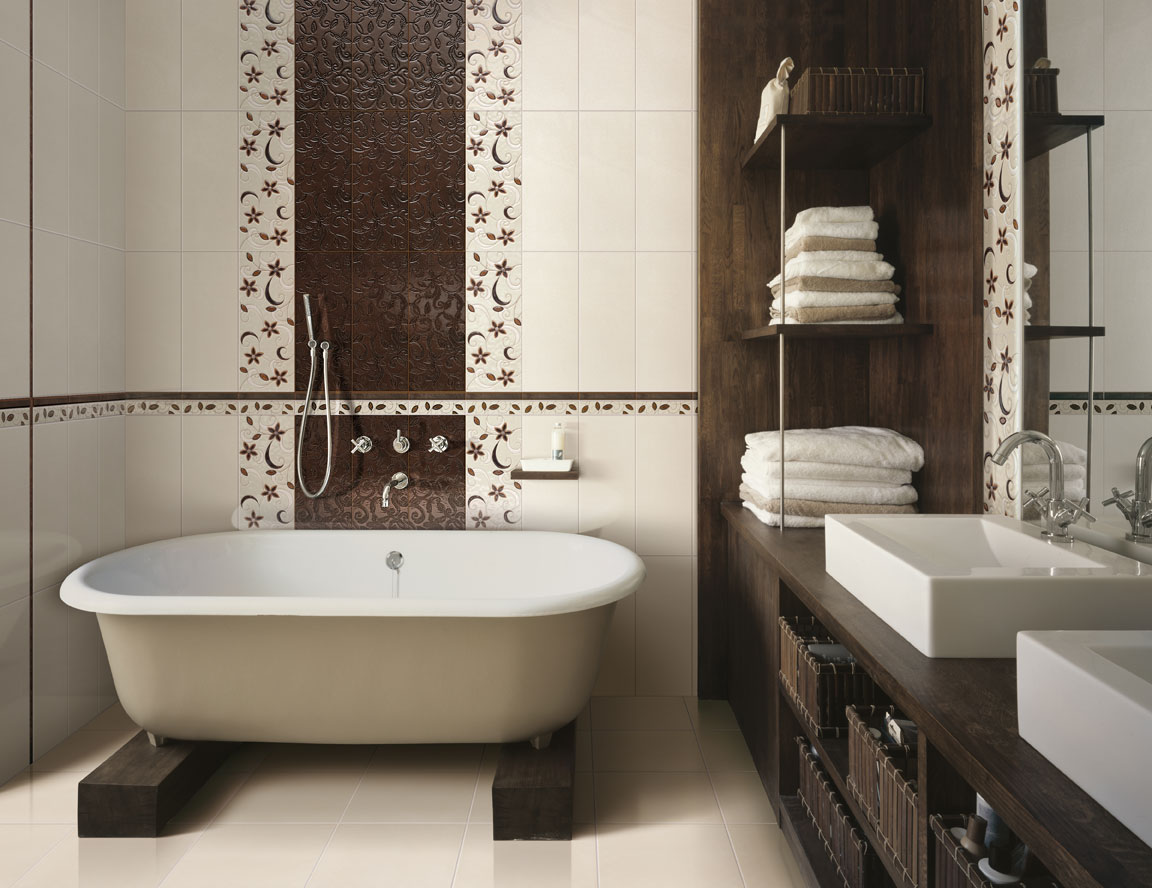A pressing question for most residents of apartment buildings: which tile is the best to choose for a small bathroom? The solution to this issue will visually expand the space of the room and create an atmosphere of comfort and cleanliness on several square meters.
When choosing tiles for a small bathroom, it is necessary to take into account the size and characteristics of the room.
Features of the room
Choosing a tile for a small bathroom is best to start with planning. Based on the characteristics of the room, it is necessary to choose the color, size and shape of the facing material.
What indicators should be considered when choosing tiles for a small bathroom:
- bathroom width;
- length;
- ceiling height;
- location of plumbing fixtures (baths, sinks, faucets, as well as furniture and visible free space);
- lighting intensity, location and number of light sources;
- other interior details, including auxiliary decor.
For clarity, you can create several templates in special computer programs that are available for online use. Based on the finished picture, it will be easier to make the right choice.

The color and size of the tiles depends on the intensity of the lighting in the room.
Color combinations
One of the highlights is the choice of tile color. The optimal color scheme will be light tones. All shades of light colors should be divided into several categories:
- warm;
- cold;
- neutral and achromatic.
The former include such popular bath options as beige and sand, peach, light yellow colors. You can choose more saturated, but the best solution is a combination of two shades of the same range. For a small bathroom, you don't have to create a traditional horizontal split. If you need to expand the space, lay out a horizontal row of tiles on top and bottom of the wall against a light background. To increase the height of the ceiling, the same technique is used, but with vertical lines. You can combine these inserts. To highlight important areas and visually approach them against the background of other objects, use dark inserts for the entire area of interest to you.
As for the cold shades, this is, first of all, the familiar blue color, as well as light purple.
The last category includes universal colors: white and light gray, pink, lilac, green and shades similar in perception properties, which cannot be unequivocally attributed to either warm or cold. Please note that the main emphasis should be on light pastel colors, this is the most successful choice.

It is important to choose the right combination of colors - they visually adjust the volume of the room and create a general mood
Item size
An equally important aspect is. Since the area is limited, large fragments will be completely out of place here. This applies to both walls and floors. However, a tile that is too small will not create the desired effect.
The optimal size is elements smaller than average. They help to expand the space, do not create a feeling of pressure and do not ripple in the eyes.
Here one more question should be resolved. It touches the shape of the bath tile. The shape of the tiles is directly related to the scheme of further layout. Plain square tiles are a versatile option, but only if you do not need to visually change the aspect ratio of the bathroom. With tiles that are optimal in shape and size, you can achieve an even greater effect than if you use only the color of the elements as a tool to visually increase the space. So, to visually increase the length or width of the room, you should choose a small rectangular tile.

Using a small rectangular tile, you can visually increase the size of the room
Laying scheme
The appearance of the bath depends not only on the tiles themselves, but also on the way the tiles are laid. Here you should pay attention to parameters such as the aspect ratio of the room. Depending on this, you can use some simple techniques to change the visual perception of the room.
The seam-to-seam pattern is considered standard, that is, laying the tiles in straight parallel rows without displacement. This option is appropriate when you are planning inserts or colored lines. But for a plain wall or floor, you can choose a random pattern.
If you decide to choose rectangular elements for the floor, you can visually change its area and move the walls apart. For narrow rooms, lay the tiles with the short side facing you. But to approach the far wall and in order to push the side walls apart, you need to do the opposite, that is, lay out the tile with the long side to the threshold.
The best choice both for solving the problem of a small area and for increasing the height of ceilings is a diagonal layout. In this case, it is important to observe the evenness of the lines so that there are no distortions at the seams.
The more non-standard the installation scheme is, the more difficult it will be for a beginner to do the job. It may be more appropriate to hire craftsmen-tilers.

Tile laying schemes will help you choose the right solution for the interior
Decorative elements
If you want to choose decorative tiles for a small bathroom, there are a few rules to be aware of. Since massive elements will be out of place here, it is best to place several inserts from the same series as the main tile on the walls. But leave the floor untouched, since you still won't be able to fully discern the decor.

The best decorative element in a small bathroom is a solid strip to match the color of the scale
The best option is plain stripes in the color of the main range or a thin decorative frieze. Large paintings made up of several tiles are not the best choice in this case, as they bring the wall closer. If you want to highlight any area, you can add mosaics to the design. A fully tiled bathroom with such material will not look very comfortable, but as an insert, this is what you need.
Grouting also plays a significant role. Its color should match the tile, so as not to create sharp and catchy contrasts. When choosing a cladding, pay attention to every little thing, because otherwise you will miss a unique opportunity to change the perception of a small bathroom, to make the space wider and brighter.
